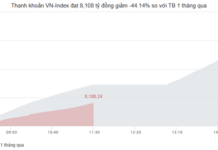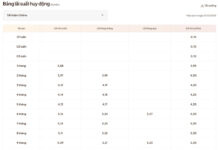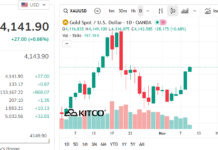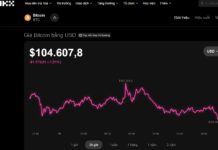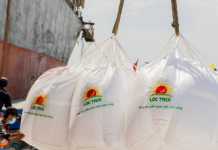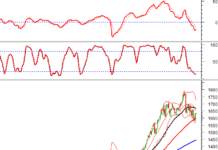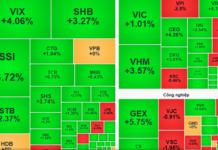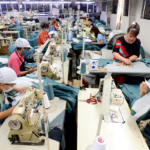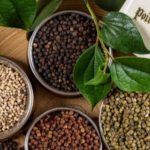Textile Growth Slows Amid Green and Digital Transformation Pressures
Mr. Tran Nhu Tung, Vice Chairman of the Vietnam Textile and Apparel Association (VITAS), reported that textile exports reached USD 30.7 billion in the first eight months. Maintaining a minimum of USD 4 billion per month could help the industry achieve its USD 48 billion target for the year. However, growth has slowed from 10% in the first half to 7% by the end of August.
This slowdown is primarily due to new U.S. tax policies, which prompted customers to place orders before April 1 to benefit from the old tax rates, leading to high inventory levels and reduced demand from June to July. Despite this, Vietnam has emerged as a key player in the U.S. market, with exports reaching USD 9.5 billion in seven months, surpassing China’s USD 7 billion. Vietnam’s market share in the U.S. now stands at 20%, compared to China’s 15%.

Mr. Tran Nhu Tung, Vice Chairman of the Vietnam Textile and Apparel Association (VITAS)
|
Mr. Tung emphasized that the greater challenge lies in the green and digital transformation requirements. Only 20-25% of businesses have the capacity to invest in green technology, while the majority face limitations. Europe demands high standards, and the U.S. is tightening traceability requirements, making it essential for companies to adopt technology to maintain their competitive edge. Additionally, the industry has yet to fully leverage free trade agreements due to rules of origin constraints related to yarn and fabric.
Experts suggest promoting domestic raw material production to create a closed-loop supply chain similar to China’s Ningbo model. However, this requires centralized policy coordination and addressing local concerns about pollution.
Footwear Industry Relies Heavily on Imported Materials
According to Mr. Nguyen Van Khanh, Vice Chairman of the Ho Chi Minh City Leather and Footwear Association, the industry aims to export USD 30 billion in 2024, primarily to the EU, with limited exports to the U.S. While U.S. tariffs present an opportunity for localization, the major challenge remains the reliance on imported materials, with 70-80% sourced from China.
The leather industry faces significant hurdles in obtaining permits, and the inherent difficulty in achieving completely “clean” production has hindered the development of concentrated industrial clusters. Mr. Khanh proposes that Ho Chi Minh City establish small industrial clusters for sole, leather, and accessory production to ensure a stable supply chain.

Mr. Nguyen Van Khanh, Vice Chairman of the Ho Chi Minh City Leather and Footwear Association
|
Wood Industry Shows Positive Growth but Faces New U.S. Tariffs
Mr. Phung Quoc Man, Chairman of the Ho Chi Minh City Handicraft and Wood Industry Association (HAWA), reported that wood exports reached USD 11.1 billion in eight months, a 6.5% increase compared to the same period in 2024. Key markets include the U.S., South Korea, Japan, China, and the EU.
However, the industry faces several barriers, including retaliatory tariffs, U.S. Section 232 investigations, and EU anti-deforestation regulations. Notably, U.S. President’s announcement on September 26 about a potential 30-50% increase in import tariffs on wood products, particularly kitchen cabinets and furniture, has raised significant concerns.

Mr. Phung Quoc Man, Chairman of the Ho Chi Minh City Handicraft and Wood Industry Association (HAWA)
|
Mr. Man suggests that the wood industry should diversify its markets to reduce dependence on the U.S., enhance value through design, transition to ODM models, and leverage cross-border e-commerce. Increasing exports of furniture rather than wood chips and pellets will be key to boosting the industry’s value.
Seafood Industry Achieves Double-Digit Growth Despite Challenges
According to Ms. To Thi Tuong Lan, Deputy Secretary General of the Vietnam Association of Seafood Exporters and Producers (VASEP), seafood exports reached USD 7.3 billion in the first eight months of 2025, a 17% increase year-on-year. The industry is projected to achieve USD 10 billion for the year, a 10% growth.
 Ms. To Thi Tuong Lan, Deputy Secretary General of the Vietnam Association of Seafood Exporters and Producers (VASEP)
|
Notably, China has overtaken the U.S. as the largest market. The industry faces multiple barriers, including high U.S. tariffs, a 2026 ban on imports of wild-caught products like crab, tuna, and mackerel, and anti-dumping duties exceeding 55% on shrimp. The EU’s “yellow card” on illegal, unreported, and unregulated (IUU) fishing has persisted for eight years.
Meanwhile, value-added products are gaining prominence, positioning Vietnam as the third-largest global player. The industry aims to become a hub for high-value seafood processing, capitalizing on new consumption trends. Beyond exports, the domestic market of 100 million people is seen as highly promising, despite challenges related to pricing and distribution.
– 16:28 26/09/2025
Vinatex and Leading Garment Enterprises Unveil Q4 Strategic Plans
Despite mounting tariff pressures from the United States, Vietnam National Textile and Garment Group (Vinatex, UPCoM: VGT) and its subsidiaries are reporting positive signals: Viet Thang estimates a 9-month profit exceeding 8% of the annual plan, Hanosimex has secured 85-90% of orders until November, and Phong Phu and Hoa Tho are expanding their international market presence.
Empowering Textile Businesses: ACB Supports the New Order Cycle
Vietnam’s textile and apparel industry is rebounding strongly, with double-digit export growth and many businesses resuming hiring after a prolonged period of austerity. However, to transform this recovery into sustainable long-term success, the support of specialized financial partners like ACB is essential.
Ho Chi Minh City Unveils New Strategy to Attract Foreign Direct Investment (FDI)
On the afternoon of September 18th, during a press conference on Ho Chi Minh City’s socio-economic situation, Mr. Trần Việt Hà, Deputy Head of the Ho Chi Minh City Export Processing and Industrial Zones Authority (HEPZA), revealed that his team had surveyed and received feedback from 32 businesses exporting to the United States. The purpose of this survey was to assess the impact of retaliatory tariffs on these companies.
Vietnam Poised for 7% Annual Growth from 2026 to 2045, Says UOB’s Suan Teck Kin
In the period from 2026 to 2045, an average annual growth rate of approximately 7% is entirely achievable for Vietnam. This vision can become a reality if the current policies of reform and openness, coupled with robust investment and trade initiatives, continue to be vigorously promoted and effectively implemented.





